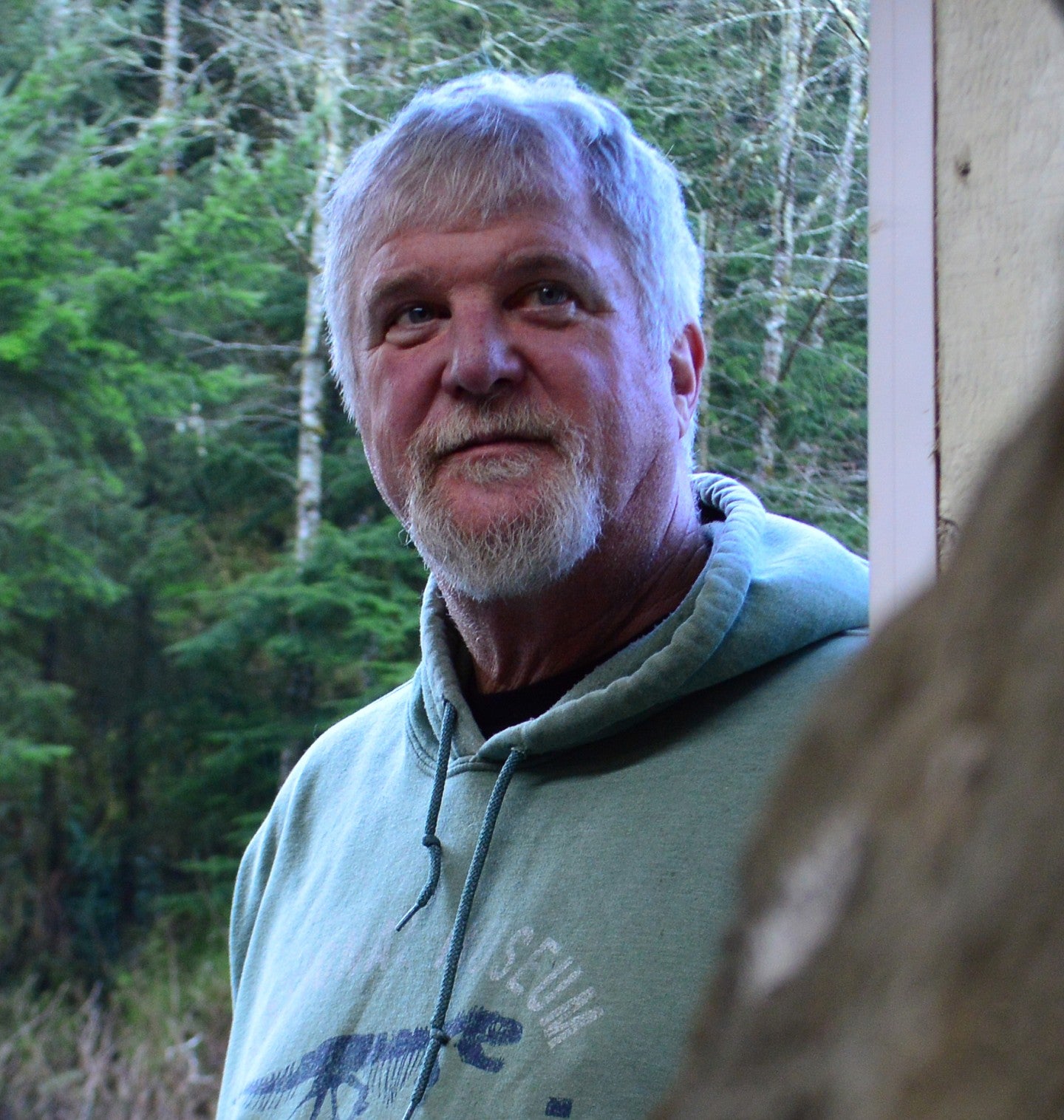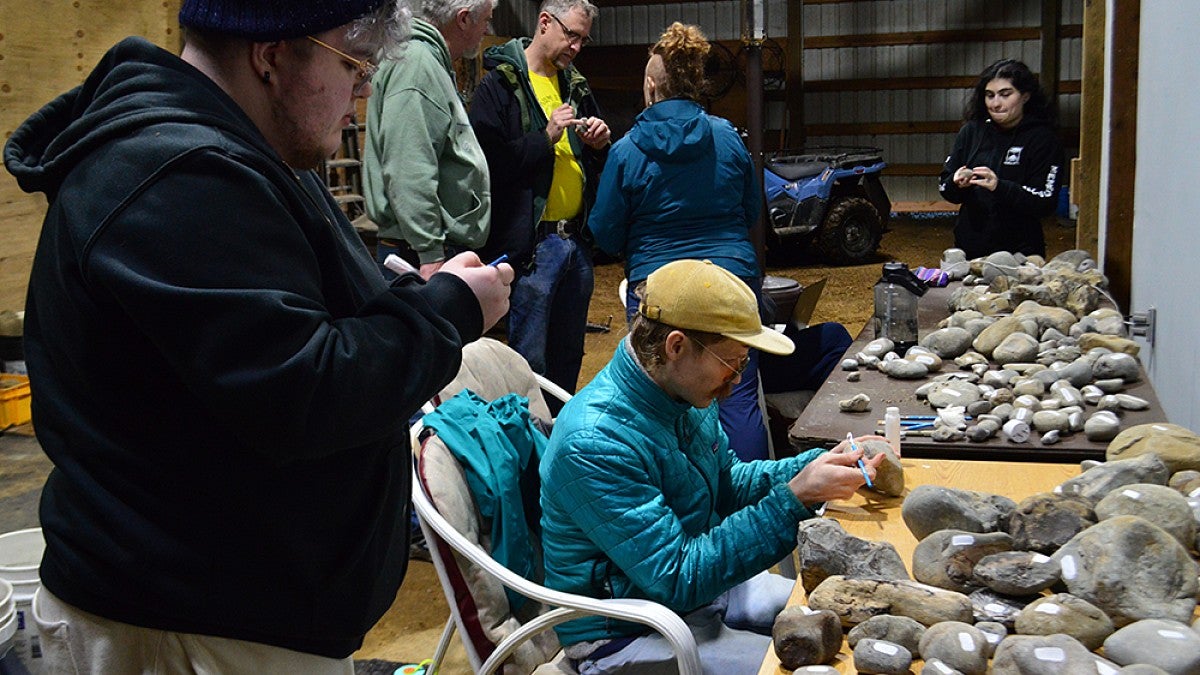When former Newport harbor master Kent Gibson’s fossil collection had gotten out of hand, he knew exactly who to call: experts from the University of Oregon and the Museum of Natural and Cultural History.
Gibson, now retired, begins most of his days with a walk on the beach near his home in Newport, keeping his eyes peeled for fossils. Over the past 25 years, Gibson’s fossil collection has grown with the tides.
“Sometimes I’ll be coming off the beach with 25 or 30 pieces,” he said.

The fossils are collected ethically; Gibson has all the proper permits for collecting fossils on public lands, and the fossils must be donated, not sold for profit. Now in the thousands, his hoard is one of the largest and most significant collections of marine mammal fossils in North America.
“Kent has a more comprehensive collection of fossils from the Astoria Formation than almost anywhere else, and certainly the largest on the West Coast,” said associate professor Edward Davis, director of the museum’s Condon Collection, referring to a geologic band exposed along the Oregon and Washington coasts.
Eventually, Gibson would like to donate the bulk of his specimens to the Condon Collection. With a collection of that size, however, it is a challenge to even catalog, harder still for a citizen-scientist.
Enter the expertise of UO students, professors and staff. Davis organized a Fossil Hackathon: three weekend extravaganzas in 2022 and 2023 to tag, identify and catalog Gibson’s fossil collection.
The students, staff and volunteers set up a paleontological command center in Gibson’s barn, processing hundreds of fossils per shift in an assembly line along several tables pushed against a wall. Volunteers Simon Zabaldo and Jacob Faulkner Jones painted small white blazes on the fossils, each approximately a centimeter long by half a centimeter high, so their colleagues could inscribe catalog numbers.
Student Emma Giometti and Jordan Rogers, a lab technician for the museum, created the collection database, a massive spreadsheet containing information about the fossils, while earth sciences doctoral candidate Kellum Tate-Jones worked with them to identify each fossil.
Andy Quintanilla, another museum lab employee, was a utility player, transporting wheelbarrow loads of fossils from the collection to the processing table and jumping in to help identify whether a fossil is a bone or a piece of driftwood, which fossils are too delicate to process in the wheelbarrow, and what is, after all that, mostly just a rock.
It's a bustling atmosphere, and it’s clear there’s no time to waste. Thousands of fossils need to be identified, after all.
“This kind of hands-on learning is so useful,” said Giometti, a second-year undergraduate student majoring in earth sciences on the paleontology track. “I think it's one of the best ways to learn, especially if you're interested in fieldwork, like I am.”
Tate-Jones, a doctoral student in earth sciences, said the only way to really learn how to identify fossils is to physically handle them.
“You start to see patterns in the shapes and textures of the preserved material,” she said. “After handling hundreds of specimens in the Hackathon, I can now pick up a weathered cobble with a little bit of bone showing and say, ‘Yep, that's definitely a fish skull.’”
Quintanilla, who graduated in 2021, agreed.
“My background is in biological anthropology, and I can more easily identify primate species and hominids than marine animals,” she said. “But, with the hands-on fossil work through several visits to Kent's collection, I can now tell when I'm looking at fish bones, shark vertebrae or even marine mammal bones now.”
“There's always room to learn the difference between mollusks, however,” she added.
Davis called it a joy to help students get such hands-on learning. “Working with a collection like Kent’s is a once-in-a-lifetime opportunity,” he said.
“I know sometime down the road — maybe not in my lifetime, but someday — people are going to be doing incredible work on this collection,” Gibson said. “Maybe someday I’ll get one named after me.”
—By Lexie Briggs, Museum of Natural and Cultural History
—Top photo: Students and museum staff work through a huge collection of marine fossils


